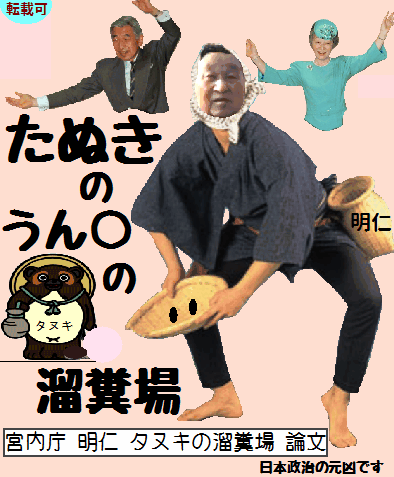皇居におけるタヌキの食性とその季節変動
Seasonal Food Habits of the Raccoon Dog, Nyctereutes procyonoides, in the Imperial Palace, TokyoThe distribution of latrines of the raccoon dog, Nyctereutes procyonoides, was examined from July 2006 to December 2007 in the Imperial Palace grounds, Tokyo, Japan. The raccoon dog is accustomed to defecate at fixed locations, forming holding latrines; thus the distribution of latrines is a good indicator of their abundance. The results suggest that the latrines are widely scattered in the study site, but are more dense in the Fukiage area, where an old-growth broad-leaved forest is established. The latrine sites are used more frequently from September to December, as the number of fresh feces increased in the autumnal season. To examine the seasonal food changes of the raccoon dogs, 10 pieces of feces from some latrines were collected every month and analyzed the indigestible contents in the sampled feces. The food items identified consisted of animal, plant and man-made materials, suggesting that the raccoon dogs were highly omnivorous. The animal materials found from the feces included mammals (4% of total feces), birds (37%), reptiles (2%), amphibians (3%), insects (95%), chilopods (56%), isopods (2%) and gastropods (12%). Invertebrates were the most abundand food item throughout the year. Three coleopteran families, the Carabidae, Staphylinidae and Scarabaeidae, accounted for a large proportion of the insects and they showed seasonal fluctuations. These suggest that the raccoon dogs fed on them as major animal food resources in the study site, and perhaps the seasonality is related to the temporal changes of availability of the insects. The majority of plant materials found in the feces was a variety of seeds, suggesting that the raccoon dogs fed on berries and fleshy fruits throughout the year. The occurrence of seeds decreased from March to April, which coincided with a low availability of fruits. The seeds found in feces were categorized into three types : (1) the short-term berry type including Prunus (Cerasus) spp., Moms spp., Rubus hirsutus and Machilus thunbergii, which occurred only a short term after their fruiting periods ; (2) the long-term berry type, including Celtis sinensis, Aphananthe aspera and Swida controversa, which occurred continuously for three or more months after the fruiting periods ; (3) the acorn type, including Castanopsis spp., Quercus spp. and Ginkgo biloba, which occurred in early spring (January to April) when the other fruits are scarce. The seasonal change of the three fruit types implies that the raccoon dogs consume the available fruits in relation to the successive fruiting periods. The proportion of artificial materials found in the feces was considerably lower than in previous studies carried out in the suburbs of Tokyo, suggesting that the raccoon dogs in the study site strongly depend on natural foods. Most of the natural food items were native to Japan since the past Edo period. Thus we conclude that the preservation of biodiversity in the Imperial Palace grounds was essential for the re-colonization by the raccoon dogs of the Tokyo metropolitan area after the 1970s.
|
|

 スパムメールの中から見つけ出すためにメールのタイトルには必ず「阿修羅さんへ」と記述してください。
スパムメールの中から見つけ出すためにメールのタイトルには必ず「阿修羅さんへ」と記述してください。